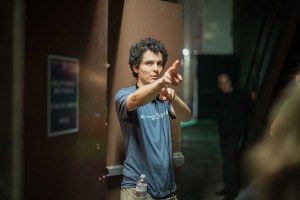
According to Chazelle, he was a drummer with an iconic, but demanding teacher, “so I stopped drumming.” Although he put his musical aspirations aside, music still played an important part in his life. After he had been Los Angeles for a few years, trying to advance a screenwriting and directing career, it occurred to him that writing a simple, personal story of a “world that I do well” might be his ticket to success.
His collaboration with Hurwitz began in college when they played in a band together. By sophomore year, after the band fell apart, they re-evaluated their ambitions, redirecting their energy to filmmaking and scoring a jazz musical called Guy and Madeline on a Park Bench. That student short eventually ballooned into an 80-minute feature.
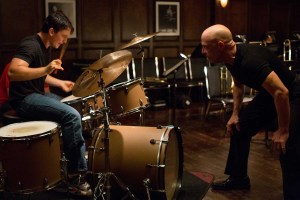
Editor, Tom Cross, who recently won the BAFTA award for his editing of Whiplash, entered into the film’s universe through executive producer Cooper Samuelson. They had worked together on a several movies as the editor was making the transition from assisting to editing.
Cooper contacted Cross with a script that they were looking to finance. The plan was to take 20-pages from the screenplay to shoot, a type of test as to whether the director had “the chops” to direct the full feature. If Cross agreed to cut the short, he would be guaranteed the feature when the funding came in.
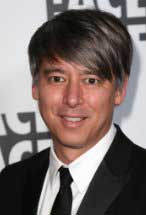
Chazelle feels finding Cross was one of the lucky breaks that happen in film collaborations. “Of course I had no idea that we would sync up so much,” he said. “Now I can’t think of doing any movie in my entire career without Tom.”
The director knew going into the project that he wanted the film to be edited like a drummer had edited it, with fast cuts. The editing needed a speed, precision and sense of “rhythmic dexterity” to it. Chazelle and Cross discussed Friedkin, Scorsese, Fincher and “editing rhythms that had electricity to them.” The short became a “lab test” for the feature editing.
Although the short was taken from scenes in the feature screenplay – a 15-minute section that included the first rehearsal sequence – the scenes that comprised the short were altered in the feature version. “Damien rewrote those scenes and, based off the edit of the short film, we found that there were certain things that we would need,” explained Cross.
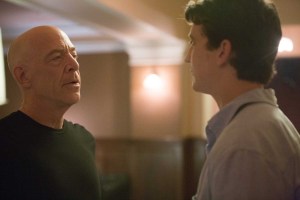 For the feature, the sequence in the short was pretty much re-filmed shot for shot. Editing rhythms were reconstructed in much the same way as the short. “In fact, there are even pieces of audio that were stolen from the short,” revealed Chazelle. “Some of the shots are actually stolen from the short and color-corrected to make them look right.”
For the feature, the sequence in the short was pretty much re-filmed shot for shot. Editing rhythms were reconstructed in much the same way as the short. “In fact, there are even pieces of audio that were stolen from the short,” revealed Chazelle. “Some of the shots are actually stolen from the short and color-corrected to make them look right.”
The feature had a short four-week shooting schedule and a short edit schedule. The director was extremely prepared, storyboarding the entire film. The major music scenes even had simple animatics set to music, forming a bible for the first assembly of the film.
“In doing the first cut of the film, I knew that I had to hit the ground running,” shared Cross. “It was a major race against the clock. They started shooting Sept. 3. We locked picture Dec. 6 for Sundance. We had to show Sundance a cut in early November.”
Chazelle’s biggest concern in getting the submission ready for Sundance was the fact that they had the same time to edit the full feature, as they originally had to edit the short. “All things said, we did hit the ground running. We were very prepared and I followed this bible. A lot of the scenes in the entire film were very close to what Damien boarded,” noted Cross. “When I flipped through the binder of the storyboards, it said something like ‘for these scenes refer to the short.’ So all I had to do was rip-off myself.”
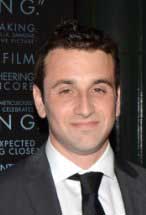
Some of the scenes, particularly in the “rushing and dragging” section, Cross tried to edit in a similar manner by matching the storyboards, but when they watched the cut, that editing pattern did not work, partially because of having a different actor, and consequently different performances, in the feature. They ended up using split screens to match up and select the best performances of both Andrew (Miles Teller) and Fletcher (J.K. Simmons), which affected where the cutting would occur.
“At first we didn’t know what to do. All we knew is that it didn’t play. Fletcher wasn’t scary. Andrew didn’t seem like he was scared enough. It didn’t seem violent or ferocious in the way it did in the short,” Cross shared. “We really had to pull out every trick in the book. We had to cut it completely differently. We had to amp everything up. It wasn’t because the performances weren’t there. They were there. It just didn’t meld the same way.”
Chazelle elaborated, “It’s really interesting because nothing in the writing changed, it was about cutting rhythms. It didn’t have to do with what J.K was doing. It had to do with what the other players were doing. It became more about finding those reaction shots. We did less work on J.K and more work on the people around him.”
With rhythm of the movie mapped out, the basic principal behind the edit was that anything music-related in the movie was going to be fast and frenetic. Only the scenes outside the conservatory would be paced a bit slower.
“Even then, there had to be moments that felt like Miles was carrying a bit of Fletcher outside of the school,” explained Chazelle. “That was all the basic idea, but I think when we actually got into the cutting room, we realized we had to let it breath a little more. I remember we found that we had to let those shots of J.K. linger a little longer than I initially thought we would.”
All of the cast in the film were musicians, so even if they were not playing live, they knew how to look like they were accurately playing and would position their hands correctly during playback of the songs recorded in pre-production. A lot of work was put in ahead of the shoot in order to get the music right. A major challenge was to get the music to sound realistic in the studio recordings.
“A thing you sometimes encounter in movie music is this overly canned sound where it sounds like somebody hit play on a CD player. We wanted it to sound like it was in a real space,” said Hurwitz. “Anytime the band falls apart, you had to do right. You don’t just want to chop off the audio. You have to finesse it through music edits. To make it sound realistic, you have to have one musician go further than the rest, because he didn’t hear them fall apart at the same moment. There are lots of little nuances like that.”
Hurwitz was present during the recording of the tracks and worked with the music editing. For certain scenes, like when Fletcher plays the piano, he was on set to make sure the performance and finger work was correct. After scenes were cut, he worked with music editor Richard Henderson, finessed some of the sounds and added overdubs and drum hits to sync.
Hurwitz collaborated with Chazelle and Cross to create the dramatic underscore. As with the rest of production, he was on an accelerated schedule. The sound of the underscore was a major discussion that began before the film was shot. The filmmakers need to decide on a soundscape that would be complimentary to all the jazz and big band music inherent to the onscreen story.
“The idea we came up with had the feel of an electronic score, but only using the instruments in a jazz big band, so that it would feel organic to the on-screen soundscape of the movie,” explained Hurwitz. “But it could still be ambient at times and have that thriller feel at times.”
The technique was to have big band musicians record instruments, then slow down, detune and otherwise process the musical sounds so it was like “a hellish version of a big band.” The intended effect was to make it seem like Andrew was being tortured by the instruments that he makes music with every day.
Cross and Henderson cut temp music to guide the pacing and emotion of the scenes, chosen based upon the flavor, feelings and mood that they wanted to convey.
“Damien wanted the city to be its own character in a way that is similar to how the city is in Taxi Driver and also very dark,” commented Cross. “Damien wanted the movie to be an action-thriller first and a music movie last. Rather than being this harmonious meeting of the minds, the music scenes would often be ferocious and brutal. In cutting these scenes, the way that the music starts ramping up, it sounds like these mini-revelations happening within the music.”
Hurwitz created the same feel using the modified big band sounds. He played with different tempos so they “wouldn’t really groove,” which was very different from the on screen jazz that was meant to sound like music.
In the underscore Hurwitz reiterated, “The bass and drums are always at different tempos. They’re rubbing against each other creating an unsettling feeling. With the saxes and trumpets, it was about finding the right textures and detuned notes.”
A number of scenes were cut from the original script. Most had to do with the world and characters around Andrew. Ultimately the scenes that remained focused on the core dramatic relationship – the back and forth between the student and his mentor.
Chazelle had a vision for the style of the film, shot the moments needed to implement the style, then rhythmically wove the music and edit into a version that stylistically played to the heartbeat of the film.





